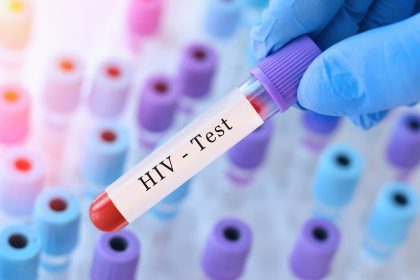The mesmerizing colors of human eyes—from deep browns to vibrant blues, subtle greens, and rare ambers—result from intricate genetic factors that influence melanin production in the iris. This same genetic programming that determines whether you have blue, brown, green, or hazel eyes also affects numerous other bodily systems and functions.
Far from being just an aesthetic feature, eye color serves as a visible marker of your genetic makeup. The genes involved in producing eye pigmentation overlap with genes that influence immune function, hormone production, and neurological development. This connection helps explain why certain eye colors correlate with specific health tendencies.
Recent advances in genetic research have uncovered increasingly specific links between iris coloration and health predispositions. While having a particular eye color doesn’t guarantee developing certain conditions, understanding these connections can help individuals make more informed decisions about preventive screening and lifestyle choices.
Melanoma risk variations across the spectrum
Perhaps the most well-established connection between eye color and health involves skin cancer risk, particularly melanoma. This relationship stems directly from melanin—the same pigment responsible for eye, skin, and hair color.
People with blue eyes typically produce less melanin overall. This reduced melanin production extends beyond the iris to include skin cells, where melanin serves as a natural sunscreen by absorbing harmful UV radiation. With less of this protective pigment, light-eyed individuals experience less natural protection against sun damage at the cellular level.
The statistics reveal a clear pattern: those with blue eyes face approximately a 30% higher risk of developing melanoma compared to their brown-eyed counterparts. This increased vulnerability extends to other forms of skin cancer as well, including basal cell and squamous cell carcinomas.
For green and hazel-eyed individuals, the risk falls somewhere in between—higher than those with brown eyes but generally lower than people with blue eyes. This gradient of risk directly correlates with the amount of melanin typically produced in these eye color groups.
This connection highlights the importance of sun protection for everyone, but especially those with lighter eyes. Regular skin checks, consistent use of broad-spectrum sunscreen, and sun-protective clothing become even more crucial preventive measures for blue and green-eyed individuals.
Pain tolerance and sensitivity differences
Intriguing research into pain perception has uncovered unexpected connections to eye color. Studies examining pain response in various medical contexts have consistently found that dark-eyed individuals generally demonstrate higher pain tolerance compared to those with lighter eye colors.
In controlled studies measuring responses to standardized painful stimuli, women with light-colored eyes reported pain beginning at lower thresholds and described it as more intense than women with dark brown eyes exposed to identical stimuli. This difference appears particularly pronounced during childbirth, postoperative recovery, and in response to certain types of chronic pain.
The mechanism behind this connection likely involves the same genes that influence melanin production. These genes also affect the production of endorphins—the body’s natural pain relievers—as well as specific neurotransmitters involved in pain signaling pathways. Additionally, melanin itself appears to play a role in how the central nervous system processes pain signals.
This connection has practical implications for pain management approaches. Healthcare providers increasingly consider factors like eye color when developing personalized pain management strategies, potentially adjusting medication dosages or complementary techniques based on anticipated sensitivity differences.
Alcohol metabolism and eye color connections
The relationship between eye color and alcohol processing represents one of the more surprising biological connections. Research examining drinking behaviors and physiological responses has revealed that eye color correlates with how efficiently the body processes alcohol.
People with lighter eye colors—particularly blue eyes—tend to exhibit higher alcohol tolerance. This increased tolerance stems from differences in how their bodies metabolize alcohol, potentially processing it more efficiently than those with darker eyes. This efficiency paradoxically may contribute to higher rates of alcohol dependency among light-eyed populations in certain studies.
Conversely, individuals with darker brown eyes often experience more immediate effects from alcohol consumption. This quicker response potentially serves as a built-in limitation mechanism, as the more rapid onset of noticeable effects might lead to naturally moderating alcohol intake.
These differences appear connected to variations in liver enzymes responsible for alcohol metabolism, which share genetic links with melanin-producing pathways. While eye color alone cannot predict drinking behavior or addiction risk, this biological connection adds another dimension to understanding individual differences in substance response.
Macular degeneration risk stratification
Age-related macular degeneration (AMD), a leading cause of vision loss in older adults, shows significant correlation with eye color. This degenerative condition affects the macula—the part of the retina responsible for central, detailed vision—and progressively impairs activities like reading, driving, and facial recognition.
The data reveals that individuals with light-colored eyes face significantly elevated risk for developing AMD compared to those with brown eyes. Blue-eyed individuals show approximately twice the risk of developing the condition compared to those with the darkest brown eyes, with intermediate risk for green and hazel eyes.
This connection stems from the protective properties of melanin within the eye itself. Higher melanin concentrations in brown eyes help filter harmful blue and ultraviolet light that contributes to oxidative damage in the retina. With less melanin, light-eyed individuals experience less natural protection against this cumulative damage.
The practical implications include more vigilant monitoring for early signs of macular degeneration in people with light-colored eyes. Regular comprehensive eye exams become particularly important after age 50 for blue and green-eyed individuals, who benefit from earlier intervention if changes appear.
Diabetes risk and progression patterns
The relationship between eye color and diabetes risk has emerged more recently in research focusing on type 1 diabetes specifically. Several large population studies have identified a statistical connection between lighter eye colors and increased likelihood of developing this autoimmune form of diabetes.
The mechanism appears connected to the same genetic factors that influence both eye color and immune system function. The genes controlling melanin production overlap with genes regulating certain immune responses, potentially explaining why those with less melanin (lighter eyes) might experience different autoimmune activity patterns.
In populations of European descent, individuals with light eyes show approximately 15-20% higher rates of type 1 diabetes compared to those with dark brown eyes. This connection appears most pronounced with the lightest blue eye colors and less significant with green or hazel coloration.
For those already diagnosed with diabetes, eye color may also influence disease progression and complication rates. Some research suggests that lighter-eyed individuals might develop certain diabetes-related complications, particularly retinopathy, at different rates than those with darker eyes.
This connection underscores the importance of regular screening for diabetes risk factors in light-eyed individuals, particularly those with family history of the condition. Earlier intervention with lifestyle modifications could help mitigate genetic predispositions in these higher-risk groups.
Cataracts and eye color correlations
Cataracts—the clouding of the eye’s natural lens that commonly occurs with aging—develop at different rates depending on iris color. This condition, which causes progressively blurry vision, glare sensitivity, and diminished color perception, shows clear correlation with eye pigmentation.
Lighter-colored eyes demonstrate heightened vulnerability to cataract formation, with blue-eyed individuals typically developing cataracts earlier than their brown-eyed counterparts. On average, people with blue eyes may develop visually significant cataracts 3-5 years earlier than those with the darkest brown eyes.
The protective effect of melanin again explains this connection. The pigment helps absorb and deflect harmful radiation that contributes to protein changes in the lens over time. With less melanin, light-eyed individuals have less natural protection against these damaging effects.
Ultraviolet (UV) exposure accelerates cataract formation regardless of eye color, but the effect appears more pronounced in those with less melanin. This makes UV protection particularly crucial for blue and green-eyed individuals, even on cloudy days when ultraviolet light still penetrates the atmosphere.
High-quality sunglasses that block 100% of UVA and UVB radiation represent an essential preventive measure for everyone, but especially those with lighter eye colors who lack the additional protection that natural melanin provides.
Vitiligo predisposition and eye pigmentation
Vitiligo—an autoimmune condition causing patches of skin to lose pigmentation—shows intriguing connections to eye color. This condition, which affects approximately 1% of the global population, occurs when the immune system attacks melanocytes, the cells that produce melanin.
Research tracking vitiligo patterns across different populations has identified that people with certain eye colors show different susceptibility rates. Contrary to what might be expected, those with darker eyes—particularly dark brown—appear to develop vitiligo at somewhat higher rates than those with the lightest blue eyes.
This seemingly counterintuitive pattern likely relates to immune system activity differences. The same genes that create more melanin in brown-eyed individuals also influence how the immune system recognizes and responds to the body’s own cells. This connection helps explain why those with more melanin might paradoxically face higher risk of developing a condition that attacks melanin-producing cells.
For individuals with darker eyes and a family history of autoimmune conditions, awareness of early vitiligo signs becomes particularly important. The condition often begins with small, pale patches that might be overlooked, especially in less visible areas of the body.
Practical applications of eye color health connections
Understanding the health implications of eye color extends beyond mere curiosity—it provides practical information that can influence screening decisions and preventive care approaches. While eye color alone never determines health destiny, it offers one visible clue among many genetic factors.
For healthcare providers, considering eye color as part of a comprehensive health assessment helps identify patients who might benefit from more vigilant monitoring for specific conditions. For example, a blue-eyed patient with a family history of macular degeneration might warrant more frequent retinal examinations than standard guidelines suggest.
For individuals, knowing the health tendencies associated with your eye color empowers more informed lifestyle choices. A person with light blue eyes might choose to be particularly vigilant about sun protection, regular skin cancer screenings, and protective eyewear given their higher statistical vulnerability to UV-related damage.
These connections also highlight the fascinating complexity of human genetics. The same genetic variations that create the beautiful diversity of eye colors also influence countless other aspects of human physiology in ways science continues to uncover.
While eye color represents just one small factor among many that influence health, its visible nature makes it an accessible reminder of our genetic uniqueness. Rather than causing concern, these connections should inspire appreciation for how our bodies function as integrated systems where seemingly unrelated traits connect in unexpected ways.
As genetic research advances, these connections between visible traits like eye color and internal health tendencies will likely become even more nuanced and informative, potentially opening new pathways for personalized preventive medicine approaches that consider the full spectrum of genetic variation.












